.
UPDATE: Since this was first posted, the full experience, including interviews with the authors and audio versions of the stories, has gone live.
.
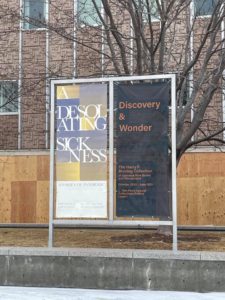 Last year I was invited by the inestimable Dave Butler to write a story for a pandemic exhibit at L. Tom Perry Special Collections. They’d recruited him for the task and I was honored to be included. In addition to writing a tale, we also made an audio recording of us reading and video of us answering interview questions.
Last year I was invited by the inestimable Dave Butler to write a story for a pandemic exhibit at L. Tom Perry Special Collections. They’d recruited him for the task and I was honored to be included. In addition to writing a tale, we also made an audio recording of us reading and video of us answering interview questions.
The exhibit is now visible (by which I mean it’s up—I’ve no idea whether the library is open). You can read the stories online and I highly recommend doing so. None of them are bad and many of them are truly excellent. And mine’s the only one with a bad word! So check it out!
Here is a BYU Universe story about the exhibit.
Here are my brief reviews:
A Desolating Sickness: Stories of Pandemic
He Gave Them Bread From Heaven for Their Hunger
This is some more Jonah bar Amittai fiction from Mattathias Westwood and, for my money, his most successful foray yet. I think what makes it stronger is Jonah steps back from the ranting and actually engages with another human being.
Corona the Thief
Sian Ann Bessey‘s story reads like a slightly wordy picture book. Corona has come and it steals away school and birthday parties and trips to the beach. The story leans a bit bourgeoisie, if you will, but it’s charming and speaks directly to children.
Proclamation
Moroni
This well-written piece flirts on the edge of satire, but never quite accepts that label, making is all kinds of depressing. Michaelbrent Collings is best known as a writer of visceral horror, but this is all the more horrifying for being at the edge of probability—social media as social apocalypse.
Between Glory and Ruin
The closest parallel to James Goldberg I can think of is that of Ted Chiang, and this story is a good example of their similarities, although the timing of this story makes is feel heavily allegorical—it might not feel that way in another year.
This is the longest one so far and it might also be my new favorite. I don’t know anything about Christopher Husberg but he has chops. Using first-person plural was a brilliant move (tied with one of my favorite stories: original, available) and it’s one of the finest looks at religious community I’ve read.
A well written piece of YA fantasy by Charlie N. Holmberg. For a moment I really thought it was going to trod the path of the Incarnations of Immortality, but it had something more (?) cheerful in mind. Although it’s a complete story, it tastes like a dry run for a novel.
Blessing the Sacrament in My In-laws’ Garage
Let’s count this among my favorite Lance Larsen poems. I think the straightforward prompt is part of what makes is accessible on a first read. Although, I should mention, I haven’t actually held any of his recent collections—just the occasional poem now and then of uncertain vintage.
Over the Rooftops
I don’t suppose we can blame Heather B. Moore that the set-up to her story reads a bit on-the-nose—history does echo, after all. It’s hard to read this as a stand-alone short story. It feels more like test run for a possible second Chinatown novel. And, frankly, why the heck not?
Safety Check
Scott Savage earns his last name here. I went from thinking it was a side-eye-at-the-elite story to an even-the-jerk-is-a-good-person story only to have it end up being a ha-ha-ha-NIHILISM!!! story. I think. I think that’s where we ended up. Anyway, I was startled.
I don’t know, if this story weren’t by Robison Wells, that I would have arrived at the mental-illness key to this puzzle’s lock quite as quickly. It doesn’t require that key. Even without the pills, it would be an effective story. The most pandemic-lite of the stories so far.
Blue
Something I’m noticing about many of these stories is that they are about us, now. Or even us months ago, in the early portion of our pandemic. These stories aren’t about processing what happened but what is happening. Brandon Mull‘s story’s ambiguous end drives right to that point.
Intervention
Classic William Morris tale. Interweaving structure, past present and future, subtle commentary build into the form, anonymous narrators, ambiguous but potent moral lesson.
Bless & Sanctify
I had thought about writing a second story and letting the editor choose, but I never got around to it. William Morris did and they published both. This one is more contemporary. It’s a good story though not formally exotic like his first one. A quarantine family’s sacrament crisis.
West Covina
This is my story. I actually wrote it in 2018 and sent it along to see if it was acceptable before writing something new. It was, so I never got around to writing something new. Although my disease is quite different from COVID-19, Covina is such a similar word, this seemed like my only chance to publish it. Plus, it has 😀.
The Real Danger
Okay. No question about this one. This is the beginning of a new Traci Hunter Abramson novel. It’s only nod toward shortstorydom is reducing four chapters to 1000 words. But it’s still four chapters of a novel. A real thriller. 100% paranoia.
That State of Awful Woundedness
This one, by exhibit editor D.J. Butler, takes place in the world of a novel series of his, but not one I’ve read. It does read like it anticipates us knowing the world, but it’s a coherent tale. I do wonder if it will slot into some future book.
Triple Sonnet in a Season of Pandemic
Michael R. Collings has written something dense like The Nephiad but accessible like his science-fiction poetry. I thought it would follow the trend of several of the stories above, turning toward some of the political angling of 2020, but no—he turns to nature for hope.
A Fresh Start
This is fun. Jessica Day George starts us off with a straightforward satire of A Certain Type of American. And because no characters have names, identities sometimes muddle. But as it continues, bread slowly brings some sort of redemption. Dunno if it will stick though….
Partially Submerged Dog
I can say with a high degree of confidence that Gabriel González Núñez has provided the least plainly obvious pandemic-themed work I’ve read so far. It’s the story of a dog in trouble who continues on in optimism. You can see it, right?
Pandemic Superhero
Honestly? I think this is the best work of Mette Ivie Harrison‘s—at least of what I’ve read. It’s shaped like a sentimental story about parents finding their way with an autistic child, but it’s so honest and lived-in it earns every beat.
One Step Enough
Although I had a hard time following it (it really deserves a second read), Josi S. Kilpack‘s poetically designed tale kept touching me in little ways. The snippets of lives and relationships felt so true—and a little painful even in the good moments.
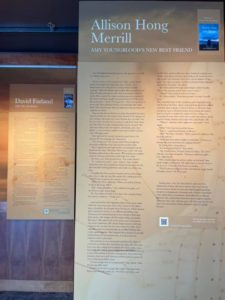 Amy Youngblood’s New Best Friend
Amy Youngblood’s New Best Friend
It would be easy to dismiss the pandemic as incidental to this story, but although it’s barely mentioned, Allison Hong Merrill has interwoven it in interesting ways—the inability to sully see the acupuncturist, the daycare masks, the very fact that the doctor is Chinese. Plus, it’s just wonderfully human.
The Last of It
The images of melting snow and a fallen leaf are beautiful, and the final irony is sharp—but words like creepazoid and Zompocalypse inject too much silliness into what is an excellent story by J. Scott Savage. Is this a MG technique to keep tensions from running too high?
The Brazen Serpent
You can argue the conclusion lays it out too plainly, but this is a solid piece of satire and it takes a stand on the right side of history, which is nice as well. I didn’t know Dan Wells had sustained humor in him, but he nailed this. Funniest piece here.
The Upland Road
This is the best example yet of how hard it is for some novelists to write short stories. David Farland has created something so complex, with so many moving parts—too many to fit together. Why is London in Italy, for instance? Or even is it? It’s hard to tell. Which is a shame because the core story is beautiful and shines through the noise.
Angels of Pleasant Grove
What is the deal with Steven L. Peck? How is it he can enter a one of my favorite genres (example, example) and just write a completely fresh version that immediately qualifies as one of the best? It’s incredible and I refuse to get over it.
Walking Through the Forest of Your Mind
So this little cyberpunk tale by Kim May is great fun. It taps into the tradition nicely while somehow feeling more like a nature fantasy ala Narnia. Plus, it has an “‘I can’t believe it’s not Soylent’ nutrient solution,” so yeah. Nice.
Still Here
I love this final story. Christopher McAfee has taken the mirror image of a pandemic and, with a light hand, explored the problem of immortality from multiple perspectives. The lightness goes a long way in making this story work, but the glories and tragedies still walk together.
Here is a video by Dave Butler walking through and talking about the exhibit.

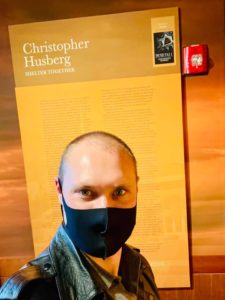
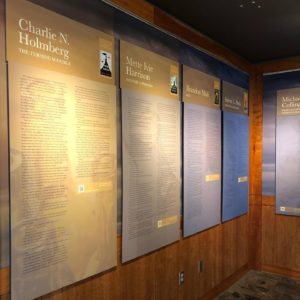
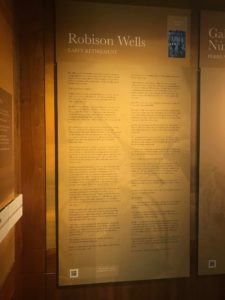
.
The full experience is now live!
While technically not a pandemic story in itself, readers of BYU’s pandemic fiction project might also want to check out Raymond F. Jones’ YA novel THE YEAR WHEN STARDUST FELL (1958). The novel tells of a sudden worldwide breakdown of all mechanical machines due to a comet and the efforts of one small isolated community coping with no machines, food, transportation, power, etc. During the course of the novel there are not one but two accompanying pandemics (anthrax and a virulent new flu).
Raymond F. Jones, best known for the short stories/novel that the film THIS ISLAND EARTH was based on, was an LDS science fiction writer whose work spanned 1941-1978. He had a dozen or so novels and nearly a hundred short stories published and was awarded a Retro Hugo award in 1996. His son Richard K. Jones has recently released several ebook omnibi of Jones’ novels and short fiction. Most of his novels are also available as standalones. THE YEAR WHEN STARDUST FELL is worth reading just for the author’s introductory essay.
.
I feel a need to find this book. It sounds like a fun weekend read.